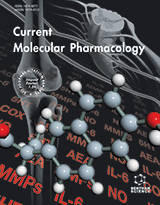Abstract
Treatment of chemical dependence (“addiction”) requires an understanding of its effects on the brain. To guide research in the area of chemical dependence, several foundational theories have been developed. These include the incentive salience, receptor down-regulation, opponent process, and psychomotor stimulant theories. These have been important both in summarizing and in guiding investigations. However, the extant theories do not provide a single unified framework nor have they yielded all of the guidance necessary for effective chemical dependence treatment. The present paper summarizes and then integrates these theories and suggests some implications for the treatment followed by this integration.
Keywords: Behavioral sensitization, dopamine, like want need, medial prefrontal cortex, receptor down-regulation, ventral striatum.
Current Molecular Pharmacology
Title:Theories and Treatment of Drug Dependency: A Neurochemical Perspective
Volume: 7
Author(s): Sheila Pakdaman, Richard E. Wilcox and Joseph D. Miller
Affiliation:
Keywords: Behavioral sensitization, dopamine, like want need, medial prefrontal cortex, receptor down-regulation, ventral striatum.
Abstract: Treatment of chemical dependence (“addiction”) requires an understanding of its effects on the brain. To guide research in the area of chemical dependence, several foundational theories have been developed. These include the incentive salience, receptor down-regulation, opponent process, and psychomotor stimulant theories. These have been important both in summarizing and in guiding investigations. However, the extant theories do not provide a single unified framework nor have they yielded all of the guidance necessary for effective chemical dependence treatment. The present paper summarizes and then integrates these theories and suggests some implications for the treatment followed by this integration.
Export Options
About this article
Cite this article as:
Pakdaman Sheila, Wilcox E. Richard and Miller D. Joseph, Theories and Treatment of Drug Dependency: A Neurochemical Perspective, Current Molecular Pharmacology 2014; 7 (1) . https://dx.doi.org/10.2174/1874467207666141017150625
| DOI https://dx.doi.org/10.2174/1874467207666141017150625 |
Print ISSN 1874-4672 |
| Publisher Name Bentham Science Publisher |
Online ISSN 1874-4702 |
 50
50
- Author Guidelines
- Bentham Author Support Services (BASS)
- Graphical Abstracts
- Fabricating and Stating False Information
- Research Misconduct
- Post Publication Discussions and Corrections
- Publishing Ethics and Rectitude
- Increase Visibility of Your Article
- Archiving Policies
- Peer Review Workflow
- Order Your Article Before Print
- Promote Your Article
- Manuscript Transfer Facility
- Editorial Policies
- Allegations from Whistleblowers
- Announcements
Related Articles
-
p53 Gene Family: Structural, Functional and Evolutionary Features
Current Genomics Current Status and Perspectives in Peptide Receptor Radiation Therapy
Current Pharmaceutical Design Ubiquitylation and Cancer Development
Current Cancer Drug Targets Regulation of Lactosylceramide Synthase (Glucosylceramide β1→4 Galactosyltransferase); Implication as A Drug Target
Current Drug Targets MiR-134, Mediated by IRF1, Suppresses Tumorigenesis and Progression by Targeting VEGFA and MYCN in Osteosarcoma
Anti-Cancer Agents in Medicinal Chemistry Escape, or Vanish: Control the Fate of p53 through MDM2-Mediated Ubiquitination
Anti-Cancer Agents in Medicinal Chemistry Molecular Mechanisms of Action of Gas1 and its Possible Therapeutic Applications
Current Signal Transduction Therapy Experimental Approaches to Tse Prevention Via Inhibition of Prion Formation
Protein & Peptide Letters Peptidic Tumor Targeting Agents: The Road from Phage Display Peptide Selections to Clinical Applications
Current Pharmaceutical Design Human Platelets Express Authentic CB1 and CB2 Receptors
Current Neurovascular Research Prospects for Rational Development of Pharmacological Gap Junction Channel Blockers
Current Drug Targets Historical Spice as a Future Drug: Therapeutic Potential of Piperlongumine
Current Pharmaceutical Design Recent Advances of Fluorescent Technologies for Drug Discovery and Development
Current Pharmaceutical Design Effects of Synthetic Peptides on the Inflammatory Response and their Therapeutic Potential
Mini-Reviews in Medicinal Chemistry Puerarin: A Review on the Pharmacological Activity, Chemical Properties and Pharmacokinetics of Main Isoflavonoid
The Natural Products Journal Click Chemistry, A Potent Tool in Medicinal Sciences
Current Medicinal Chemistry Crocetin: an Agent Derived from Saffron for Prevention and Therapy for Cancer
Current Pharmaceutical Biotechnology Stimuli-Responsive Nanoparticles for siRNA Delivery
Current Pharmaceutical Design Half a Century of l-DOPA
Current Topics in Medicinal Chemistry Prion Diseases: Time for a Therapy ?
Current Medicinal Chemistry - Immunology, Endocrine & Metabolic Agents



























